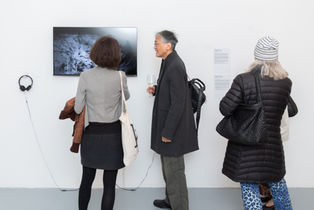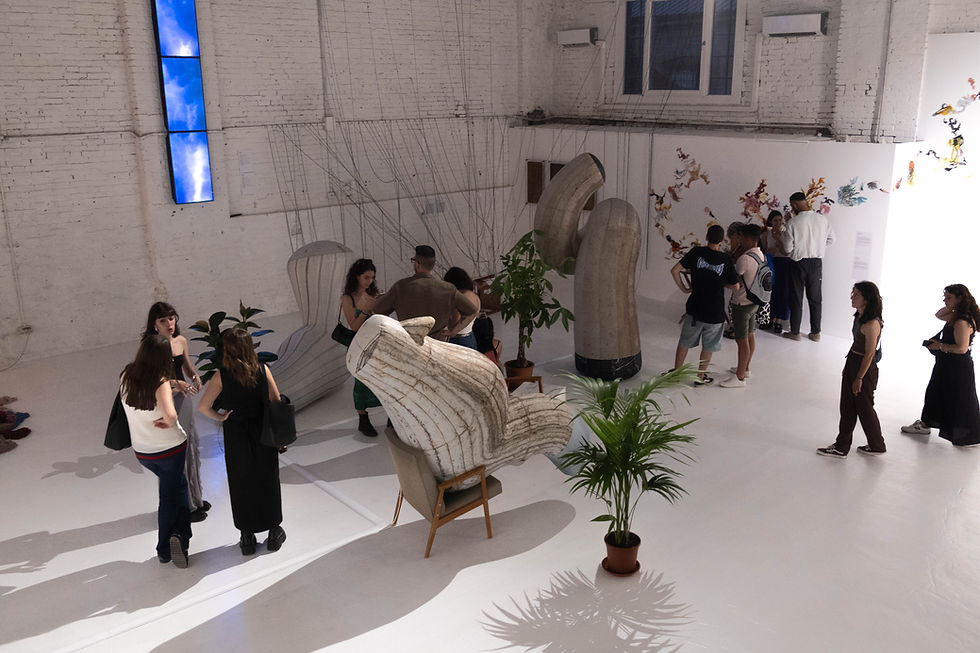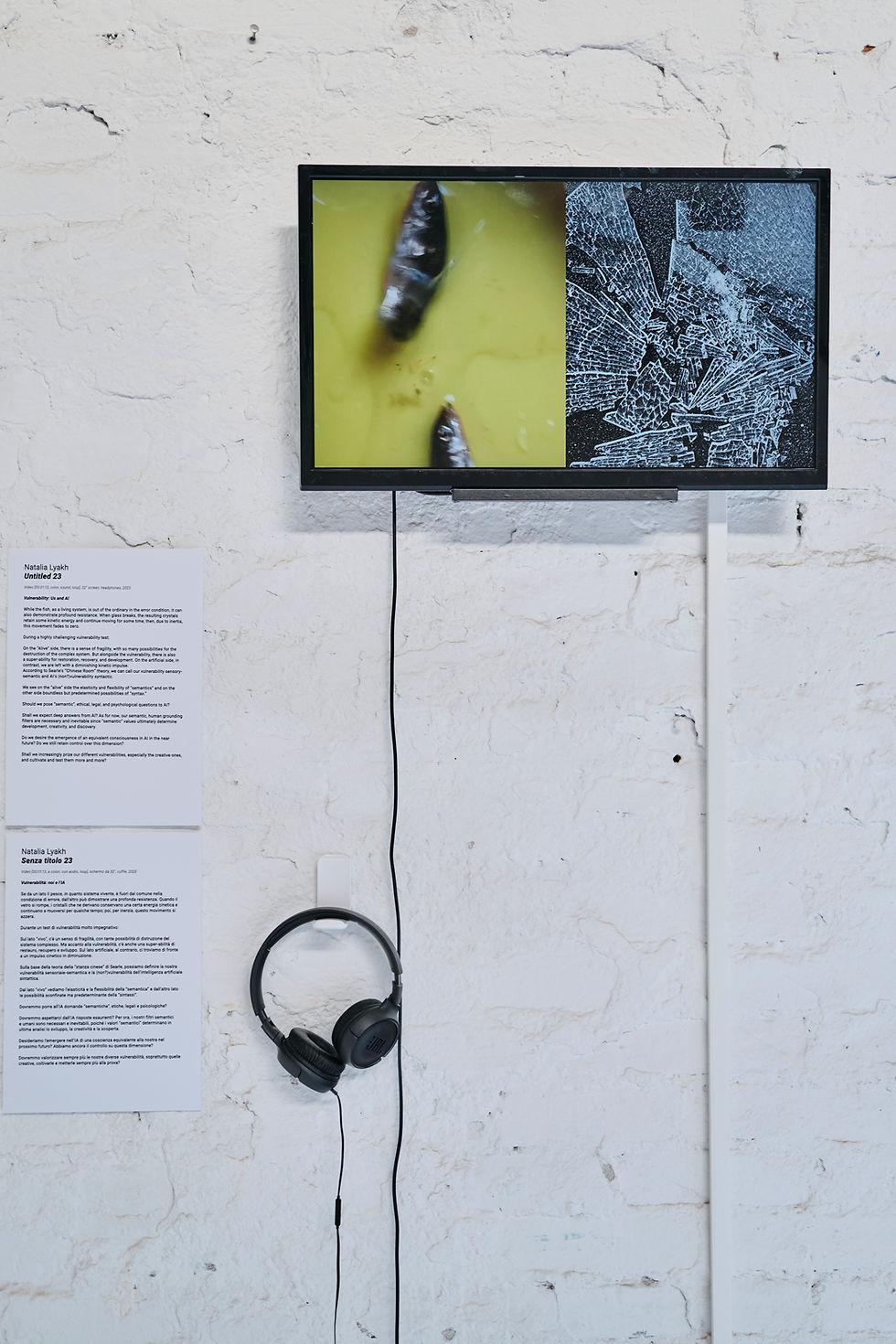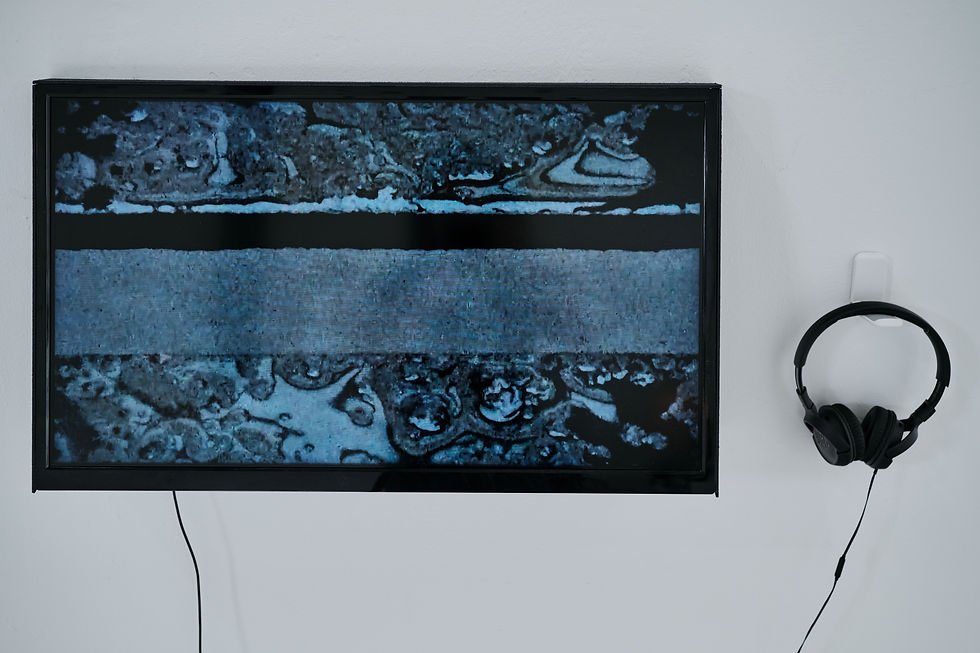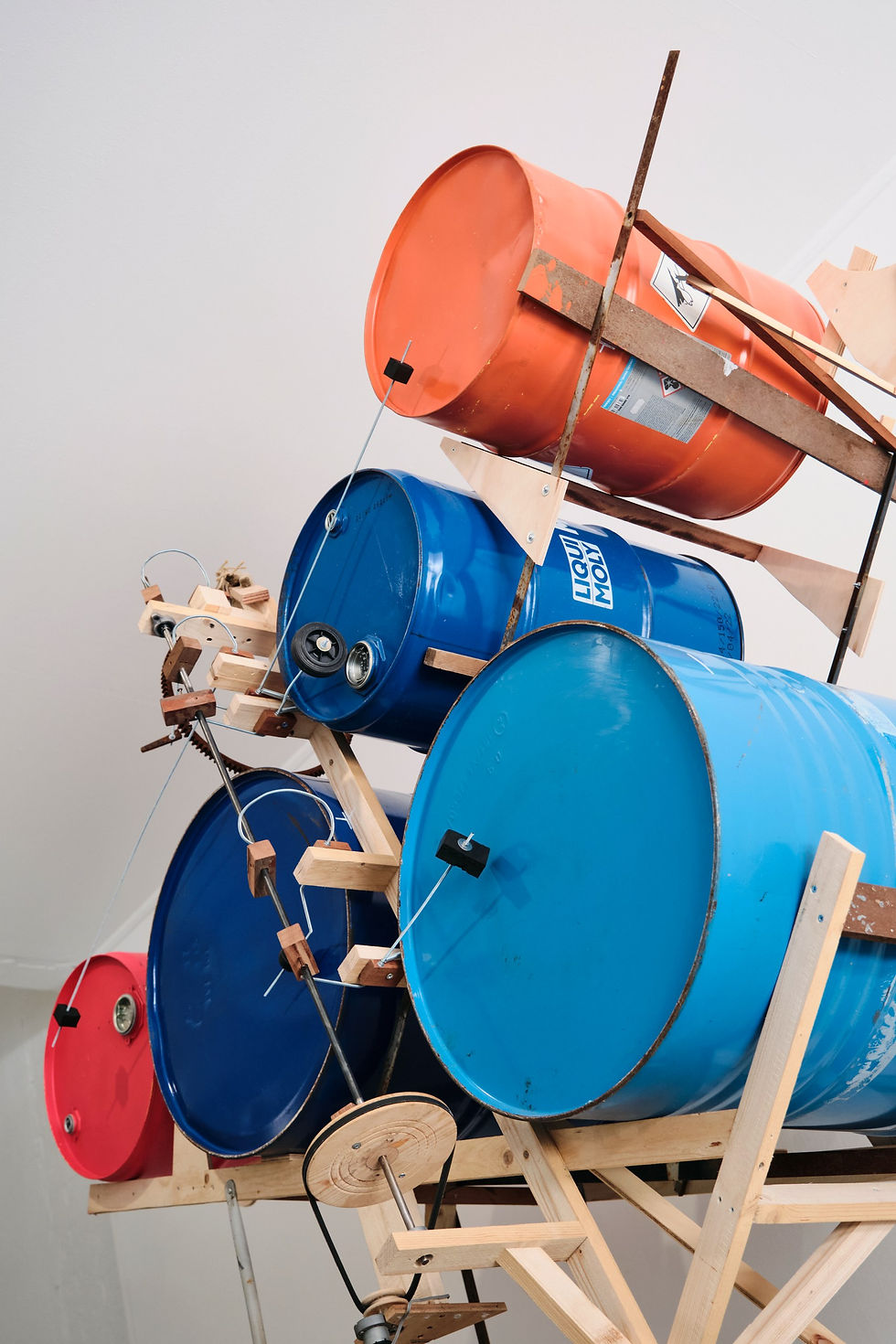CYFEST 15: Venice. Vulnerability.
CYFEST 15: Venice. Opening Night, April 15, CREA, Cantieri del Contemporaneo
Dates
April 15—August 30, 2024
Location
Venice, Italy
Venue
CREA, Cantieri del Contemporaneo, Giudecca 211-b
Artists
Samvel Baghdasaryan, Ludmila Belova, Max Blotas, Alexandra Dementieva, Alexey Dymdymarchenko, Yvetta Fedorova, Anna Frants, Elena Gubanova & Ivan Govorkov, Irina Korina, Natalia Lyakh, Anne Marie Maes, Phill Niblock & Katherine Liberovskaya, Tuula Närhinen, Nao Nishihara, Fabrizio Plessi, Mariateresa Sartori, Monica Naranjo Uribe, Where Dogs Run.
CYFEST 15 is organized by CYLAND International MediaArtLab. The project's general sponsor is One Market Data. The project is made possible in collaboration with the Ca' Foscari University of Venice, The Centre for Studies in Russian Art — CSAR, LEONARDO ISAST, Samvel Baghdasaryan Art Foundation, and Weave.
Panel Discussion
CYFEST 15 Catalogue — Venice (PDF, 7MB)
International Media Art Festival CYFEST 15 by CYLAND MediaArtLab
CYFEST 15: Vulnerability is a series of traveling exhibitions hosted worldwide. CYFEST 15 took place in Yerevan, Armenia and Miami, USA, in 2023, and continued in Venice, Italy, in 2024.
The (anti)fragility of biological, social and cyberspaces, personal memories, and scientific imagination, the facsimile of rain and indexical, asemiotic writing, artistic exploration of non-human co-authorship, and a connection between knitting patterns and Mandelbrot sets were all presented in this group exhibition.
The program featured installation, performance, and discursive formats. Key commissions included the multi-disciplinary project Drop Tracer, studying nonhuman agencies and the relationship between images and the natural world by Tuula Närhinen. Ann Marie Maes’ bacterial-grown skins investigate the sculptural potential of organic materials and interfaces between the human and the non-human, the macroscopic and the microscopic. Pioneers of science art, Where Dogs Run collective, look at the terms of the Mandelbrot sets as expressed through knitting patterns in a live performative installation. Mariateresa Sartori, through the frottage technique, gives value to the unseen geology and casts light upon the little-known story of the quarry in Rosà, Vicenza. Elena Gubanova and Ivan Govorkov’s media installation recreates the concept of «Time Density» developed by Soviet astronomer Nikolai Kozyrev. This exhibition also featured rarely exhibited monotypes «Re-Pressions» by the acclaimed Armenian artist Samvel Baghdasaryan (1956-2017), experimental video art works by Fabrizio Plessi, inflatable fabric sculptures by Irina Korina, architectural and urbanistic objects made of recycled LEDs by Alexandra Dementieva, newly commissioned installation by Anna Frants and much more.
Anna Frants
Vagaries of Affections
Installation, 2023
Arduino C, Python; Raspberry Pi 3, Arduino controllers; stepper and servo motors, aluminum tubes, steel, PLA plastic acoustic horn, vinyl records, podium
Engineers: Philipp Avetisov, Denis Andreev, Eugene Ovsyannikov, Dmitry Shirokov
Supported by CYLAND MediaArtLab




Elena Gubanova & Ivan Govorkov
Time Density
Media installation, 2021
Video [00:40:15, Ultra HD 4K video (3 840*2 160), 16:9, monochrome video, no sound, loop]
3D printing; Arduino;
65″ screen, light sensors, microcontroller board;
digital prints on plastic, secondary clocks, a model of Nikolai Kozyrev’s torsion balance, a shelf, spotlight
Engineers: Andrew Strokov, Alexey Grachev 3D engineering design by Alexander Bochkov
Video by Elena Gubanova, 2021
Video editing by Anton Khlabov Dedicated to the memory of astronomer V. S. Gubanov
Supported by CYLAND MediaArtLab




Mariateresa Sartori
Sassi. Reading The Rocks
Drawings, frottages, photos, graphite on stone paper, photos on cotton paper, 2016
Courtesy of artist and Galleria Michela Rizzo
Thanks to Istituzione Fondazione bevilacqua La Masa, to Stefano Pasinato (quarry EGAP, Vicenza), to the geologists Andrea Marzoli and Giancarlo Rampazzo


















